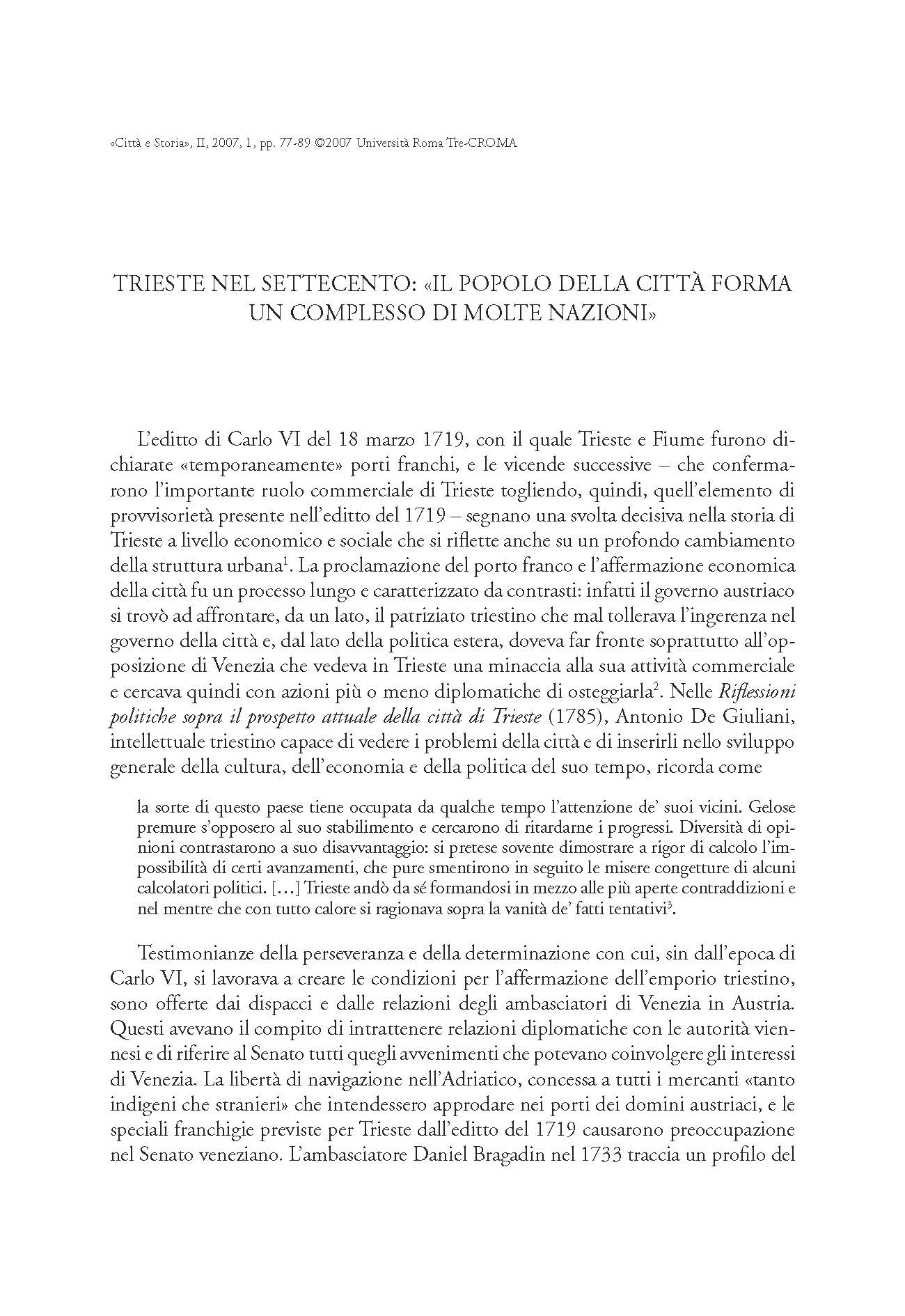Trieste nel Settecento: «il popolo della città forma un complesso di molte nazioni»
6,00 €
Trieste’s expansion in the Eighteenth century represents, beyond an example of urban development, the meeting between various cultures at a decisive historical moment. The increasing number of merchants and foreign nations supported the urban transformation process: at the same time the concession of privileges and exemptions encouraged people to establish in the town. The demographic growth and the merchant activities sparked a great demand for housing and work places and consequently, a significant mutation in the urban fabric: new areas were built and became more densely populated. The recognition of the «nations» by Austrian authorities was owed more than to an ethnic recognition of a religious multiplicity, to the will to exercise a social control on the group, understood as a «nation» and partly to the necessity of regulating the immigration. The documentary sources, cartography and drawings, registered better than every other technique the originality and the peculiarity of Trieste, simplifying the relationship between authorities and citizens speaking different languages.
Trieste’s expansion in the Eighteenth century represents, beyond an example of urban development, the meeting between various cultures at a decisive historical moment. The increasing number of merchants and foreign nations supported the urban transformation process: at the same time the concession of privileges and exemptions encouraged people to establish in the town. The demographic growth and the merchant activities sparked a great demand for housing and work places and consequently, a significant mutation in the urban fabric: new areas were built and became more densely populated. The recognition of the «nations» by Austrian authorities was owed more than to an ethnic recognition of a religious multiplicity, to the will to exercise a social control on the group, understood as a «nation» and partly to the necessity of regulating the immigration. The documentary sources, cartography and drawings, registered better than every other technique the originality and the peculiarity of Trieste, simplifying the relationship between authorities and citizens speaking different languages.

